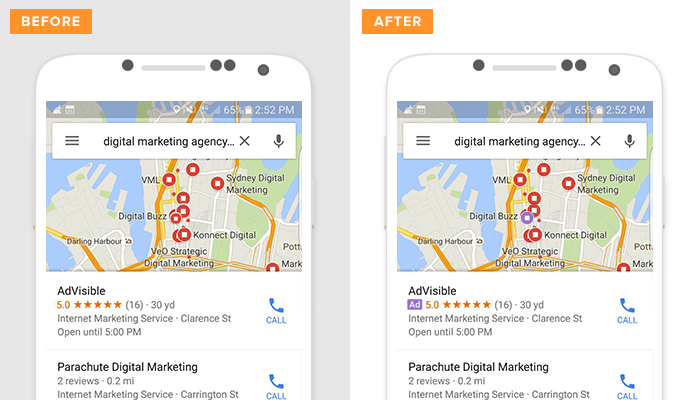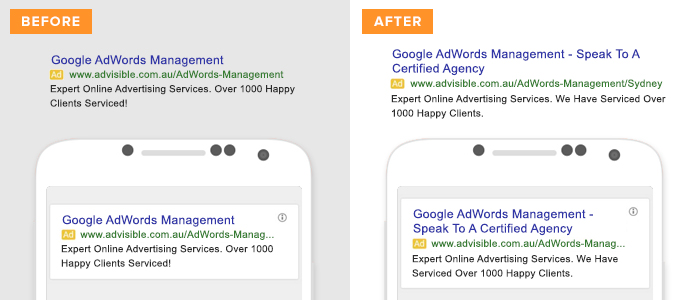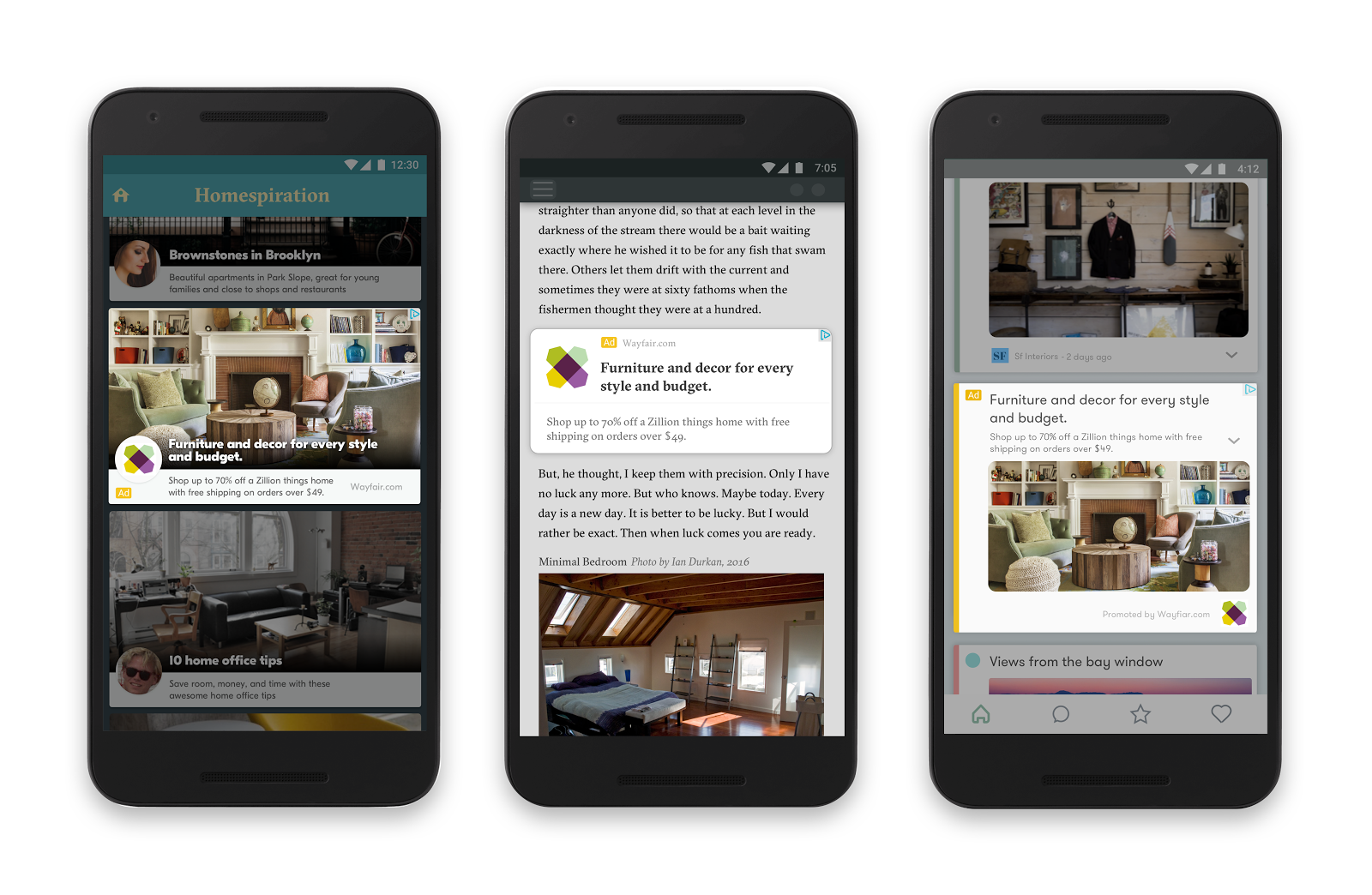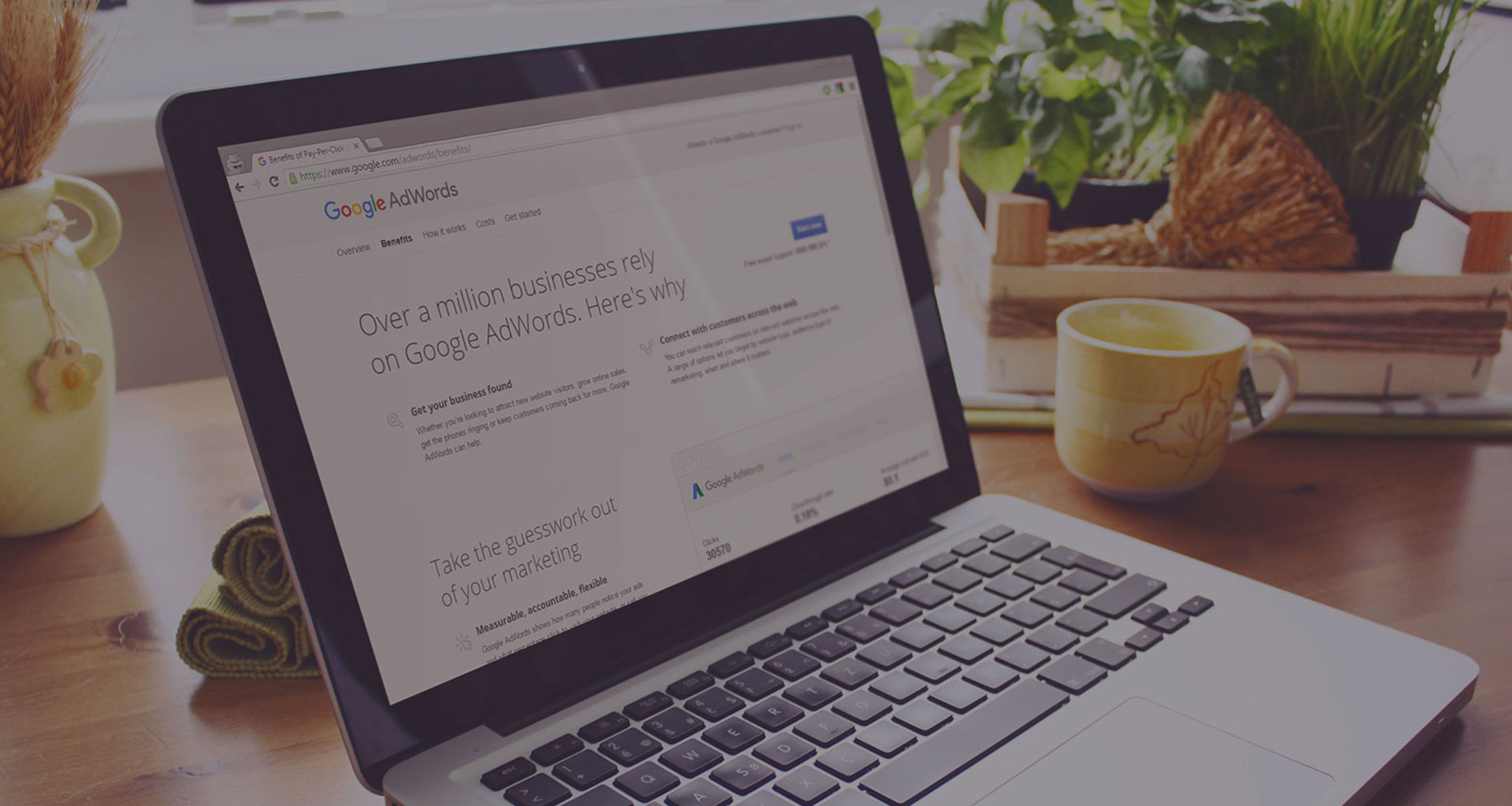A couple of years ago, Google came up with “Enhanced Campaigns” to help create a single campaign for multiple platforms. After that, all recent past announcements revolved around mobile ads features and types. This year’s announcement was no different. The recent announcement by Google about upcoming changes to AdWords is again mobile-centric, similarly to the changes that have launched in the last couple years.

According to the above graph based on our own data here at AdVisible, Google search clicks on mobile devices exceeded that of desktops in July 2015. This mobile dominant trend has continued, as mobile based searches are on the rise & desktop based searches are on the decline. With websites, businesses and even bloggers alike, trying to target mobile users, it is only natural that the new Google AdWords changes are designed to enhance ad performance on mobile devices.
I have summarized the 6 major changes for you below.
1. Promoted Pins on Maps
For the last few years, Google has been experimenting with ads on Google Maps, but this year, they made it official.
The first major change announced on May 24th was the introduction of “Next generation of local search ads”. The new Google Map ads available on the app, mobile and desktop website, will provide a much more customized and branded experience to marketers.
According to Google, a third of all the mobile searches are local. This is what pushed the company to make advertisements on Google Maps a possibility, by introducing promoted pins.
Businesses can now use a location extension to use promoted pins that will be visible to Google map users who are using the route and search for the related keyword. Below is an example of what promoted pins will look like.

- The local pages now come with a new look.
- An option for businesses to add a wide range of content types, whatever suits their industry. (For example, a business can now add local product inventory).
- Businesses can also add discount offers, coupon codes, and promotions.
What does this mean for businesses?
Did you know one billion mobile users use Google Maps and one and a half billion destinations are visited based on the searches conducted on Google Maps? Local searches are also growing 50% faster than mobile searches overall Making local search the new focal point of the company’s efforts.
Ads on Google Maps is very exciting news for businesses looking for in-shop conversions. This way, businesses can encourage their online traffic to become foot traffic, and convert at the company’s physical location.
Google also claims that the in-shop sales are outpacing online sales for businesses. With “branded pins” on Google Maps, businesses can now target more customers for their in-shop sales.
Google decides which ads will show on maps based on a few target user context signals, such as search history, user interests, time of day and behaviour.
2. New Ad Formats: Expanded Text Ads
To offer a more unified experience across all devices to users, right side ads were eliminated from the search results in February. Google will offer expanded text ads that will appear on both mobile devices and desktop.
Text ads just got bigger! Expanded Text Ads are a major boost for mobile PPC. The new 30-30-80 format comprising two 30-characters headlines and one consolidated 80-character description line will go live later this year to replace the old 25-35-35 character text ads for all advertisers across all devices. With these ads, mobile screens are no longer restricted. They are mobile responsive, wrap automatically and also enable longer creative messaging. With the increase to online real estate for AdWords users, I predict that click-through-rates will increase considerably.

What does this mean for AdWords users?
This is especially useful for businesses targeting mobile users. With more visibility when compared to organic searches, businesses are expected to increase their CTR’s by as much as 25%, according to some early testing by Google.
Businesses need to make full use of bigger ads immediately; and take advantage of the newly available real estate. You need to act fast when it becomes widely available, to ensure your competitors don’t race ahead of you.
3. More Accurate In-Store Conversion Measurement
In the last two years, Google has measured 1 billion store visits with 99% accuracy. You are probably wondering how they did that? By simply looking into the location history of people who have clicked on an ad.
Even though “AdWords Store Visits” is still available for some large stores (first introduced in December 2014), it will now be more readily available moving forward. Google announced that it is now offered to 1000 businesses based in 11 countries.
What does this mean for businesses?
With clearer online-to-offline metrics available, businesses can calculate the ROI and the percentage of online searches and ad clicks that actually convert to shop visits.
In a case study presented by Google, 6% of the mobile ad clicks resulted in a trip to a dealership for Nissan in the UK, which reflected 25x ROI.
4. Responsive Display Ads
From now on, Google will create responsive display ads for businesses that can fit the screens of any device. All businesses need to do is to provide a headline, description, a URL and an image.

What does this mean for businesses?
With responsive display ads, businesses don’t have to waste time on designing different ads formats for different platforms. Google will choose the best format of the ad based on its effectiveness and where it will be used.
5. Changes in Bidding by Device Types
This is my favourite change, because I will now be able to finally sleep at night. This comes as a relief as many advertisers (including myself) complained about the previous bidding structure in which tablets were connected with the desktop. In coming days, marketers will have the option to bid separately for desktop, mobile, and tablets.
What does this mean for businesses?
In a mobile-first world, businesses can now easily make mobile the centre point of their campaigns as there is no more need to bid for desktop first. Now, advertisers can bid independently for all three devices; mobile, tablet and desktop.
6. Audience Targeting in Search Ads
The success of Remarketing Lists for Search Ads (RLSAs)has resulted in Google announcing the upcoming ‘Similar Audience’ targeting.
Businesses can target customers who have visited the website or the company blog using the Similar Audience Targeting that can be a very useful tool for increased sales and ROI.

What does this mean for businesses?
Advertisers can now increase bids for their target gender and ages and can pull out of bidding for age segments that are not willing to pay for the business service or product.
What More?
A new Google AdWords interface is also expected to be available soon in 2017 with features like:
- Updated navigation system.
- Grouping related tabs.
- No dimension tabs.
- Location segmentation.
- New campaign creation workflow.
All in all, I believe the new Google AdWords changes are very effective in targeting the larger segment of the internet users who are using mobile devices for searches. Based on data I have collected from our clients, more than half of the searches are made on mobile devices. With the recent changes, Google allows businesses to optimize their ad campaigns for mobile users. This is a positive change for the industry, and will allow advertisers to leverage off the surge in mobile searches.
If you’d like to learn more about the impact these changes will have on your AdWords campaigns, simply drop me an email at andrew@advisible.com.au or comment below





